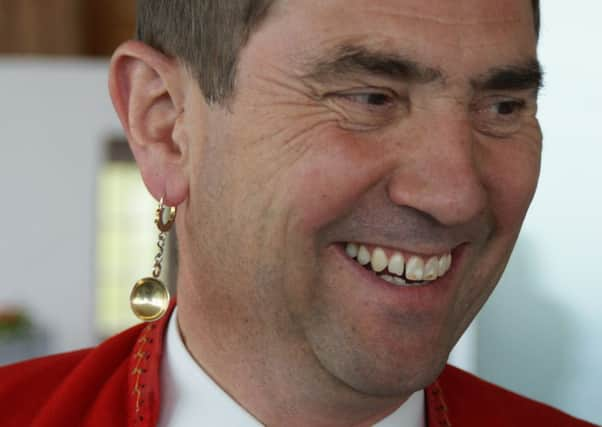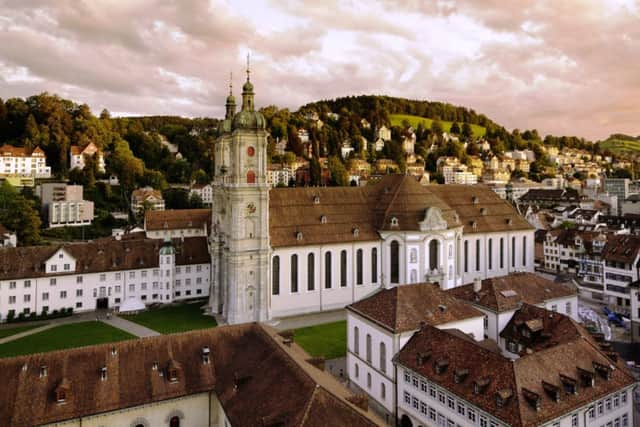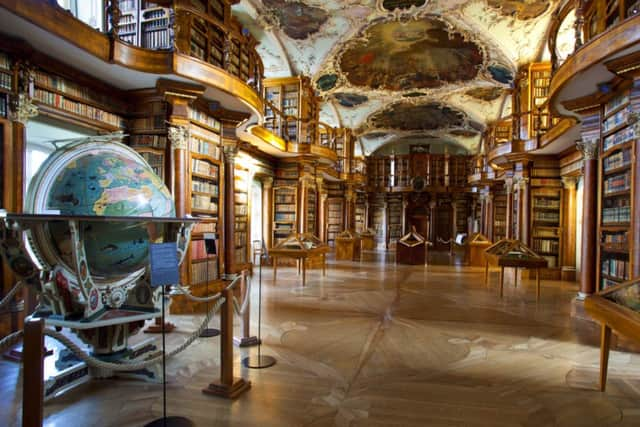Gee Switz, a great place for culture


The yodelling class was the only part of the itinerary I was slightly hesitant about...but I needn’t have worried!
High up in the panoramic scenery of north east Switzerland we were in the capable hands of yodelling tutor Thomas Sutter.
Advertisement
Hide AdAdvertisement
Hide AdOur ‘classroom’ was a cable car station with spectacular views of majestic lakes and magnificent mountain ranges.


Extrovert teacher Thomas, large single earring dangling away, quickly put the travellers (including this easily embarrassed Lancastrian) at ease.
My lyrics weren’t too complex – basically “Yo di yo di yo di yo” while my several travelling companions had similar simple sounds to sing – all of us joining in a kind of “round.”
Harmony, surprisingly, wasn’t a problem. Keeping our various tones going required us to spin/roll a coin around the side of a wooden bowl and pitch our melodious voices to the pitch obtained!
Advertisement
Hide AdAdvertisement
Hide AdThe yodelling session was one of the highlights of a memorable journey along, and sometimes branching off, the Voralpen (Pre-Alpine) Express, a rail route from St Gallen to Lucerne popular with both “locals” and tourists alike.


This north eastern part of the country covers what the Switzerland Tourism people promote as “the softer side of Switzerland”.
It’s a good slogan and, though “soft”, this area, like the rest of the country, is still spectacular in terms of scenery and what it has to offer to tourists.
Switzerland’s rail network is renowned for both comfort and clockwork accuracy, and the hovercraft-smooth trip from Zurich airport to St Gallen gave me a taste of both the travelling comfort and attractive countryside I’d be enjoying over the next few days.
Advertisement
Hide AdAdvertisement
Hide AdAs a city St Gallen offers a more relaxed pace than Zurich.
Tourist attractions include a textile museum, reflecting the city’s past and present involvement in design, particularly of embroidered textiles
One of our first stopping places was Appenzell (which gives its name to the ‘Appenzellerland’ region), and a visit to an old brewery, run by the Locher family.
There’s a small museum here offering talks on the history of brewing there – and well attended sampling sessions.
Advertisement
Hide AdAdvertisement
Hide AdOne of the cultural highlights is the area’s ‘folk art’ depicting paradise-like rural scenes and country folk in traditional costume.
Such art can be seen almost everywhere from murals on buildings to paintings and prints in tourist shops – and even on the beer bottles labels.
As well as taking their beer seriously, locals are serious about their politics, and have been since 1403.
Every year since then voters (currently about 4,000 of them) have gathered in Appenzell town square for an open air meeting to elect cantonal judges and civic officials.
Advertisement
Hide AdAdvertisement
Hide AdIt’s perhaps the only democracy in the world where ballot boxes aren’t needed!
In this region history abounds, nowhere more so than the town of Einsiedeln, with its ancient Benedictine abbey, school and library.
Pilgrims have come here for hundreds of years, not least to get a glimpse and a blessing from the abbey’s Black Madonna, one of the highlights of the baroque building.
Next door the school houses a library where there are treasures to behold – my visit coincided with a display of medieval atlases, and lining the walls were everything from a Bible owned by the Swiss Reformer Ulrich Zwingli, to works by 20th century surrealist artist Salvador Dali.
Advertisement
Hide AdAdvertisement
Hide AdWhile this isn’t the Alps, and there’s no snow in summer, you can still ski in Einsiedeln which has its own ski jumps just out of town, where big name Swiss and European skiers train year round.
The end point of the journey is Lucerne, one of the many jewels in Switzerland’s panoply of “must visit” cities.
Its best known landmark is the restored medieval Kappellbrucke (Chapel Bridge) on the city’s waterfront, with its famous octagonal tower and scores of triangular-shaped paintings chronicling the history of the city.
We only had a morning to spare in Lucerne, so what better way to spend it than a few hours looking round one of Europe’s best art displays – the Rosengart Collection on Pilatusstrasse.
Advertisement
Hide AdAdvertisement
Hide AdThere’s a wide variety of art on display here, from Cezanne’s naked bathers, to Monet’s dreamy landscapes, as well as works by Miro, Modigliani, Chagall, and a major collection of the works of Klee and Picasso.
Here is treasure, which I wish I had more time to explore.
Returning back to the UK from here was astonishingly easy. Around an hour direct by train from Lucerne to Zurich airport and back to Manchester all in an afternoon...back home in Lancashire by early evening.